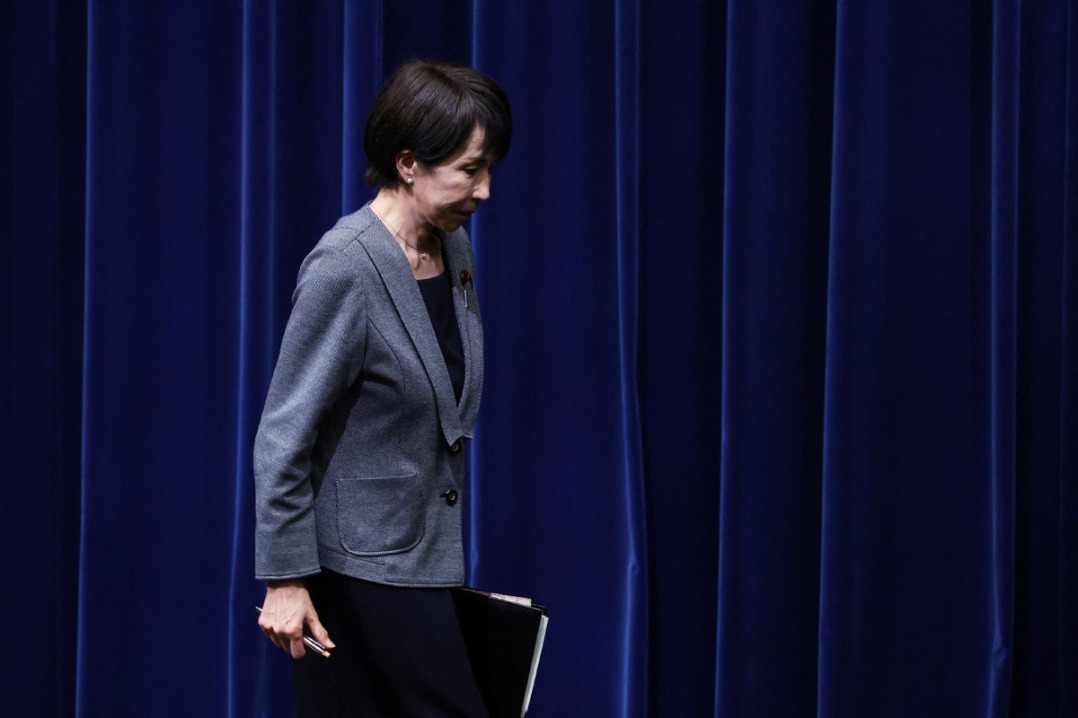Build up confidence


Insufficient domestic demand has gradually become a prominent problem for the Chinese economy
Editor's note: The world has undergone many changes and shocks in recent years. Enhanced dialogue between scholars from China and overseas is needed to build mutual understanding on many problems the world faces. For this purpose, the China Watch Institute of China Daily and the National Institute for Global Strategy, Chinese Academy of Social Sciences, jointly present this special column: The Global Strategy Dialogue, in which experts from China and abroad will offer insightful views, analysis and fresh perspectives on long-term strategic issues of global importance.
One of the main reasons for the lack of driving forces for China's economic recovery is the weak expectations for the future among micro entities. The lack of confidence of residents and private enterprises in their economic prospects has become quite notable. Residents are unwilling to consume heavily or leverage heavily. Private enterprises have neither the motivation to expand investment nor the courage to increase their innovation input. The slow consumption recovery and the gradually weakening investment have dragged down the nation's economic recovery, which in turn further affects the recovery of residents' income and the growth of company profits. Against this backdrop, there is an urgent need for the government to introduce a package of policies to stabilize the economy and restore the confidence of micro entities.
The macroeconomic policy portfolio should include at least four dimensions: fiscal, monetary, industrial, and risk prevention policies.
In the current situation, it is necessary to consider further promoting the policy of fiscal expansion. Whether a new round of policy-backed and development-oriented financial instruments will be implemented in 2023 should be clarified as soon as possible, as well as the amount and pace of implementation, to enable local governments to continue to help support infrastructure construction.
The true scale of special bonds issued by local authorities must not significantly decrease compared to last year. The true issuance this year should exceed the target amount of 3.8 trillion yuan ($522 billion).
It is also necessary to consider issuing large-scale special treasury bonds, and use the funds raised from the bonds to issue consumer vouchers to Chinese families. The large-scale issuance of consumer coupons can effectively stimulate final consumption while solving the problem of overproduction. In fact, some local governments issued consumption vouchers last year for specific industries, such as tourism, catering, automobiles and home appliances, achieving good results and stimulating high consumption multipliers. This year, it is worth considering promoting the practice nationwide and expanding the consumption vouchers from specific industries to unrestricted purposes.
Monetary policy should focus on implementing a more significant interest rate reduction. It is recommended that China's central bank reduce the loan interest rate by at least 50 basis points as early as possible and influence the loan prime rate interest rate through the operations of medium-term lending facility. One of the main factors currently restricting the central bank's interest rate cuts is likely to be the depreciation pressure on the renminbi against the US dollar. Although the widening interest rate gap between China and the United States caused by interest rate cuts may exacerbate the pressure on renminbi depreciation, it should not become a constraint on monetary policy. First, interest rate differentials are not the only decisive factor of exchange rates. In the current situation, what is more likely to affect the exchange rate trend is the expectation of the future relative trend of Chinese and US economic growth. Second, in the context of a significant decline in export growth, an appropriate depreciation of the renminbi exchange rate can help stabilize exports. Third, if the renminbi depreciates significantly against the US dollar due to monetary policy operations, the central bank still has multiple means to maintain the relative stability of the renminbi exchange rate.
The real estate sector should enjoy price and time priority in industrial policy adjustment. The general direction of "buying houses for living in rather than property speculation" is undoubtedly correct. But the latest round of real estate regulation policies implemented since 2021 have been somewhat too strict. Over the past two years, various types of developers have fallen into financing difficulties, and there have been many instances where top developers are on the brink of large-scale defaults. The implementation of a package of policies to expand financing channels to bond, credit and equity markets since November last year has not effectively helped developers fundamentally overcome their difficulties. In the short term or even for a considerable period of time, it is difficult to find one or several industries to replace the stock contribution of the sector to all aspects of the Chinese economy. This means that under the premise of "buying houses for living in rather than property speculation", regulatory measures should be taken in a tailored and more sustainable way.
Risk prevention policies should help local governments resolve their debt risks swiftly. The current local government debts are one of the most prominent risks that plague the health of China's financial system. At present, there are some signs of risks in the bonds and non-standard debts of urban investment companies in various regions nationwide. It is not realistic for many local governments in the central and western regions to rely solely on their own efforts to resolve the accumulated existing debts so far. Therefore, the central government should develop a systematic top-level design to resolve this round of local government debt, by sharing the cost among the central government, local governments, and commercial banks. This cannot be achieved without a new round of auditing, replacement, and restructuring of debts. While resolving these existing debts, it is necessary to avoid the accumulation of new debts through deeper adjustments in central and local financial powers. This means that the solution must be scientific, transparent and trustworthy and effectively prevent moral hazard. In general, the local debt problems should be solved with good planning and put into immediate action. The total cost of resolving such debts in a timely manner will be lower than that of resolving them after a collective default on local government debts emerges and threatens the security of the banking system.
To summarize, China's current economic growth rate is still lower than its potential growth rate, resulting in a negative output gap. The Chinese government should implement a package of macroeconomic policies to eliminate the output gap and bring the economy back on track to realize potential growth. Fiscal, monetary, industrial and risk prevention policy support should jointly contribute to a significant rebound in China's economic growth rate.
Zhang Ming is deputy director of the Institute of Finance & Banking at the Chinese Academy of Social Sciences and deputy director of the National Institution for Finance &Development. Chen Xiao is a doctoral student at the Business School at Beijing Normal University. The authors contributed this article to China Watch, a think tank powered by China Daily. The views do not necessarily reflect those of China Daily.
Contact the editor at editor@chinawatch.cn.

































